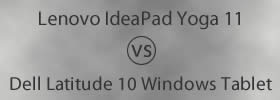Difference between D.B.A. and D.B.M.S
Key Difference: D.B.A. refers to database administrator, whereas D.B.M.S. refers to Database management system. A D.B.A. is associated with the design, implementation, maintenance and repair of an organization's database. D.B.M.S. basically manages large quantity of structured data with the advantages of query processing, controlling the access to data, data sharing and proper retrieval as well as modification of data.
 The software field of computing is vast, and thus the roles of people working in the industry also vary. One such important profile that belongs to the category of computing is D.B.A. A database administrator (DBA) is the one who is basically responsible for managing the databases. To understand the role of a D.B.A, one must be familiar with the term ‘database’. Database is actually a collection of information that is organized in tables. The data is generally centralized in databases so that it can be arranged and managed independently of applications.
The software field of computing is vast, and thus the roles of people working in the industry also vary. One such important profile that belongs to the category of computing is D.B.A. A database administrator (DBA) is the one who is basically responsible for managing the databases. To understand the role of a D.B.A, one must be familiar with the term ‘database’. Database is actually a collection of information that is organized in tables. The data is generally centralized in databases so that it can be arranged and managed independently of applications.
A D.B.A. is associated with the design, implementation, maintenance and repair of an organization's database. A D.B.A.’s role may also be extended to additional role requirements like planning, development and troubleshooting.
Some general responsibilities of a D.B.A. include:
 D.B.M.S. refers to the database management system. It basically manages large quantities of structured data with the advantages of query processing, controlling the access to data, data sharing and proper retrieval as well as modification of data. These softwares are created to maintain and utilize large scale collection of data in an efficient manner. Database management systems were introduced by Charles in 1960, whereas relational database systems were founded by Dr. E.F.Codd of IBM's San Jose Research Laboratory in the year 1970.
D.B.M.S. refers to the database management system. It basically manages large quantities of structured data with the advantages of query processing, controlling the access to data, data sharing and proper retrieval as well as modification of data. These softwares are created to maintain and utilize large scale collection of data in an efficient manner. Database management systems were introduced by Charles in 1960, whereas relational database systems were founded by Dr. E.F.Codd of IBM's San Jose Research Laboratory in the year 1970.
There are several advantages to using a database management system like -
- It reduces the data redundancy.
- It maintains the data integration and quality.
- Data in a database is documented and described on its own basis.
- Inconsistencies can be avoided and handled.
- To take care of many fundamental operations.
- They include security tools to control access, particularly for writing. .
Comparison between D.B.A. and D.B.M.S :
|
|
D.B.A. |
D.B.M.S. |
|
Full form |
Database Administrator |
Database Management System |
|
Definition |
A database administrator is the one who is basically responsible for managing databases. A D.B.A. is associated with the design, implementation, maintenance and repair of an organization's database. |
D.B.M.S. refers to the database management system. It basically manages large quantity of structured data with the advantages of query processing, controlling the access to data, data sharing and proper retrieval as well as modification of data. |
|
Types |
|
|
|
Type of entity |
A type of technical profile designated to a person |
Application (a type of system software) |
Image Courtesy: technoshf.blogspot.com, authorstream.com









Comments
NICE DESCRIP[TION S ABOUT THE CONCEPT I REALLY APPRECIATE
Deili Vikas Verma
Tue, 07/21/2015 - 09:45
Add new comment